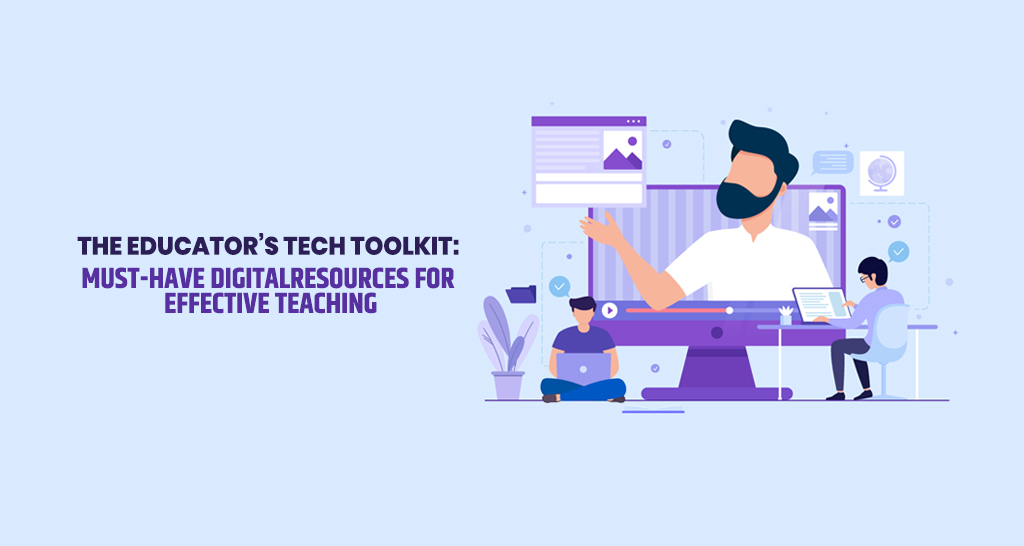The landscape of education has significantly evolved with the advent of digital technology. From the blackboards of the past to the interactive whiteboards of today, educational tools have undergone a transformative journey.
Integrating technology into teaching practices is no longer just an option; it’s essential for enhancing student engagement and improving learning outcomes.
In this blog, we will explore a variety of digital tools, from basic to advanced, that are crucial for every educator’s toolkit.
Basic Tools for Everyday Tasks
Online Rulers and Measurement Tools
Precision in subjects like math and science is non-negotiable. Online rulers serve as an essential online measurement tool for keeping education accurate and up to the mark.
These digital tools help students understand complex diagrams and perform precise measurements directly on their screens, making learning both interactive and accurate.
Simple Calculator Apps
Math doesn’t have to be intimidating. Simple calculator apps are great for teaching everything from basic arithmetic to advanced calculus. These apps help students visualize calculations and understand complex formulas, thereby enhancing their mathematical skills without the fear of making errors.
PDF Readers and Editors
In today’s digital classroom, PDF readers and editors are indispensable. Teachers rely on these tools to distribute reading materials, whereas students use them to complete assignments. The ability to annotate, highlight, and add comments directly on documents makes these tools invaluable for reviewing and interacting with teaching materials.
Interactive Learning and Engagement Tools
Interactive Whiteboards
Interactive whiteboards transform traditional teaching into an engaging, fun, and interactive session. They allow teachers to bring lessons to life by integrating multimedia resources and interactive content, which can significantly enhance the learning experience for students.
Polling and Quiz Apps
Tools like Kahoot and Poll Everywhere have revolutionized how educators conduct assessments. These apps make learning fun and engaging, allowing teachers to create interactive quizzes and polls that students can participate in using their smartphones or computers, promoting active participation.
Animation Software
Animation software can turn a dull lesson into an exciting and engaging one. Simple animation tools enable teachers to create animated videos that explain complex concepts in a visually appealing and digestible manner, helping students to better retain information.
Communication and Collaboration Platforms
Video Conferencing Tools
Interactive whiteboards transform traditional teaching into an engaging, fun, and interactive session. They allow teachers to bring lessons to life by integrating multimedia resources and interactive content, which can significantly enhance the learning experience for students.
Polling and Quiz Apps
Tools like Kahoot and Poll Everywhere have revolutionized how educators conduct assessments. These apps make learning fun and engaging, allowing teachers to create interactive quizzes and polls that students can participate in using their smartphones or computers, promoting active participation.
Animation Software
Animation software can turn a dull lesson into an exciting and engaging one. Simple animation tools enable teachers to create animated videos that explain complex concepts in a visually appealing and digestible manner, helping students to better retain information.
Communication and Collaboration Platforms
Video Conferencing Tools
Platforms like Zoom and Google Meet have become the backbone of virtual classrooms. They facilitate real-time video lessons, allowing interaction as if everyone were in the same room. Thus breaking the barriers of physical distance in education.
Collaborative Workspaces
Tools such as Microsoft Teams or Slack enhance communication and collaboration among students and teachers. They support real-time messaging, file sharing, and project management, making group assignments more manageable and more collaborative.
Educational Blogging Tools
Blogging tools provide a platform for students to publish their work and engage with a broader audience. These platforms help students develop their writing skills and offer a space to express their thoughts and knowledge publicly.
Resource Management and Planning Tools
Learning Management Systems (LMS)
Platforms like Moodle and Canvas simplify the organization of course materials and tracking of student progress. They are essential for managing educational content and ensuring that students can access learning resources anytime and anywhere.
Digital Lesson Planners
Digital lesson planners help teachers organize daily lessons and educational content efficiently. These tools assist in maintaining a structured teaching plan and ensure that all educational objectives are met throughout the academic year.
File Sharing Services
Google Drive and Dropbox are pivotal for sharing educational materials. They allow teachers and students to access and distribute files easily, facilitating a seamless exchange of information.
Content Creation and Curriculum Development Tools
Content Curation Tools
Tools like Wakelet and Padlet assist teachers in gathering and organizing educational content from various sources. These platforms enable educators to compile and share resources that enrich the curriculum and provide diverse learning materials.
Curriculum Mapping Software
This software helps design and align the curriculum with educational standards. It ensures that the teaching strategies meet the learning objectives and comply with the required academic guidelines.
E-book Creation Tools
E-book creation tools empower teachers to create their own textbooks or supplementary materials tailored to specific teaching needs. These personalized resources make teaching more relevant and effective for their particular student group.
Final Words
Embracing a diverse set of digital tools is crucial for adapting to various educational needs and enhancing teaching effectiveness. Educators should explore these technologies to find the ones that best fit their teaching style and students’ learning preferences. We invite you to share your experiences with these tools or suggest other useful digital resources for educators in the comments below. Your insights will help enrich the teaching community and foster a more connected and informed educational environment.

